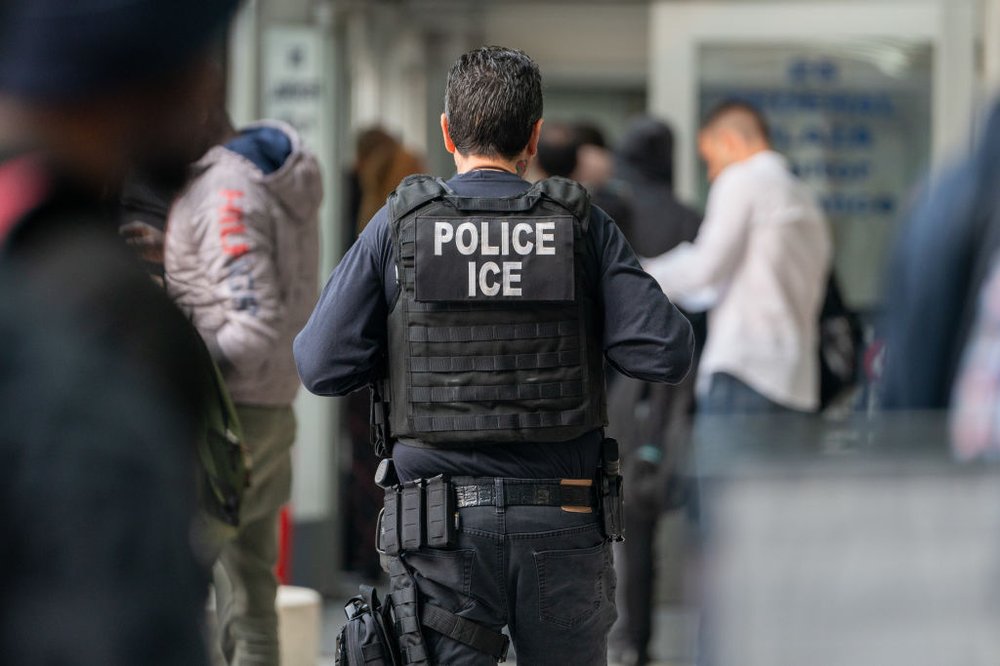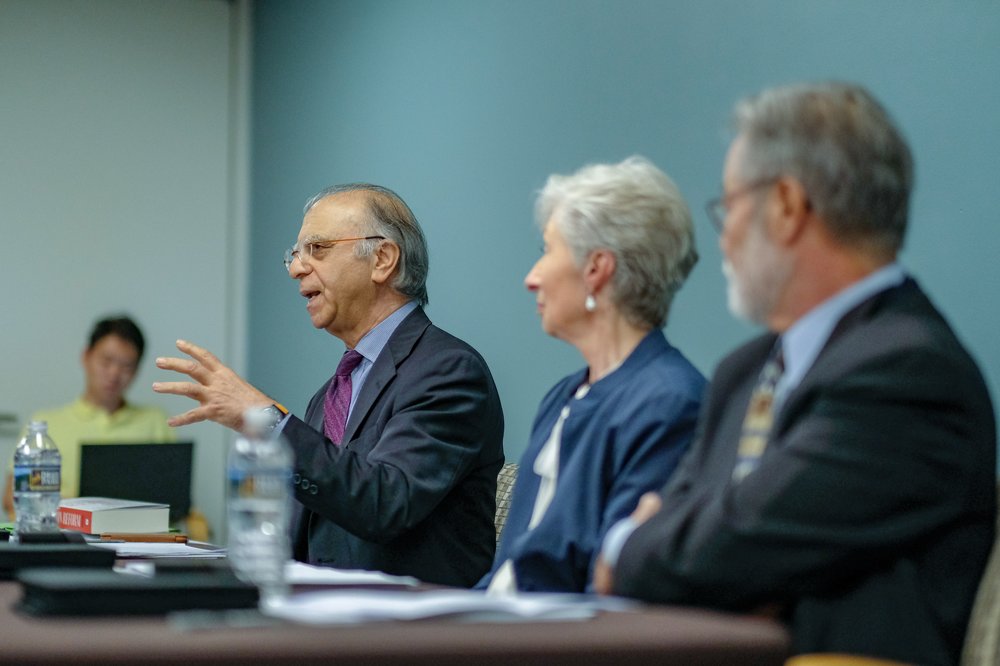Mayor Adams has sparked a debate over NYC’s ‘sanctuary city’ status. What does it mean?
March 2, 2024, 10 a.m.
His call for more cooperation between the city and federal immigration agents marks a shift from his predecessors.

Mayor Eric Adams, in a major break with his predecessors, recently said New York City should modify its “sanctuary city” policies limiting communication and cooperation between local agencies and federal immigration-enforcement officials.
Twice this week, Adams told reporters he thinks city agencies should be empowered to cooperate with federal authorities to deport immigrants suspected of committing violent or serious crimes.
Prevailing policy bars the city from honoring requests by immigration authorities to hold or detain suspects for immigration officials unless the accused person has been convicted of certain violent crimes and a judge has ordered their removal. It also bars the use of city personnel or other resources to help enforce immigration laws.
“We should be communicating with ICE [federal Immigration and Custom Enforcement], and if ICE makes the determination of deporting, then they should,” Adams said, as reported by the AP.

The comments from the Democrat and retired NYPD captain followed a series of high-profile violent crimes where migrants were charged as suspects. Adams' remarks prompted a host of questions about sanctuary city policies — not the least of which is what the politically loaded designation actually means.
"All Things Considered" host Sean Carlson discussed these issues with Muzaffar Chishti, senior fellow and director at the nonprofit Migration Policy Institute's NYU Law School office. A transcript of their conversation follows. It has been lightly edited for clarity and length.
Carlson: The term "sanctuary city" has become such a political football over the years. I'm not even sure many people even know what it actually means. So, can we start with what is a sanctuary city and how did New York City become one?
Chishti: Well, there's no dictionary meaning, and there's no legal meaning of the word "sanctuary." So it has evolved over time. And I think people really have a misconception as if, if you're a sanctuary city, that the mayor of the city hides unauthorized people under his desk. I mean, that's not what a sanctuary city does.
Sanctuary city policies in our city, in New York, have evolved since the early ‘80s. They started with Mayor Koch. They were reaffirmed by Mayor David Dinkins, Mayor Rudy Giuliani, Mayor Mike Bloomberg, and Mayor Bill de Blasio — both Republican and Democratic mayors.
And they were not immigration policies. They are policies about public safety. The mayors realize that in order for us to improve public safety in our city, we want to make sure that anyone, including immigrants, including unauthorized immigrants, feel safe to report crimes and be witnesses in a crime — that if the city agency then cooperates with federal law enforcement agencies and threatens the removal, that's going to impede that.
That's sort of what the foundation of sanctuary policies is. Each city makes a determination about which violent criminals are important for them to be removed. And that changes from time to time.
The mayors realize that in order for us to improve public safety in our city, we want to make sure that anyone, including immigrants, including unauthorized immigrants, feel safe to report crimes and be witnesses in a crime ...
Muzaffar Chishti, senior fellow and director at the Migration Policy Institute at New York University Law School.
The problem with what our mayor today is saying — that just because someone is accused of a crime, that should lead to deportation — [is] that cannot happen in our constitutional system. No matter how bad the migrant crisis is, we cannot ignore bedrock constitutional principles.
Does the city's sanctuary status mean that ICE can't make arrests in the five boroughs?
If ICE has a warrant, they can make an arrest. That was the proposition even under the de Blasio the administration, which further lessened cooperation with ICE. The issue is, does the local law enforcement agency on their own hand over migrants to ICE? And that's sort of where the difference is. If they have a warrant, they can arrest anyone they want.
Supporters of the sanctuary designation say it helps to drive down crime. It allows migrants or immigrants to step forward and cooperate with police. Detractors say it encourages people to enter and remain in the country without authorization. Are either of those claims borne out by data?
Well, the data shows — all studies across the political spectrum show — that crime among immigrants, both unauthorized and authorized, is lower than among [the] native-born population. And some of that is obvious: Unauthorized people especially do not want to have a bad brush with the law, because there are consequences for that.
So it's logical that it's lower. On the other hand, I don't think just because people think that they have a constitutional right to protection if they're accused of a crime, I don't think that's the magnet for people to come to the country illegally or to stay here illegally.
You mentioned that the first sanctuary policy was based on an executive order signed by then-Mayor Koch. It's been reissued by his successors, both Democrat and Republican. So what, if anything, can the mayor do on his own to change the city's laws, and does he need the City Council for it at all?
What happened is, the policies in the past from Mayor Koch all the way to Mayor de Blasio were set by the mayors.
The man who was most aggressive about [maintaining] non-cooperation between the city and the federal government was Mayor Giuliani. He actually sued the federal government after a change in federal law aimed at weakening cities’ non-cooperation policies. So there's a huge history, bipartisan history on this.
I think what changed in the de Blasio administration is that the City Council was allowed more leeway in deciding what levels of criminals could be handed over to ICE. So if the mayor wants to change that policy he now has to involve the City Council in deciding what levels of criminals can be handed over.
Muzaffar Chishti, a senior fellow and director of the Migration Policy Institute office at New York University School of Law. Thanks so much for joining us.
Thanks so much for having me.
NYPD head made unproven claims about a ‘migrant crime wave.’ Then Trump repeated them. Did an insult spark clash with cops in Times Square? An ex-prosecutor says the question matters. How Mayor Adams and President Biden helped set the stage for immigration reform, however unwittingly New Yorkers back ‘right to shelter,’ but hold ambivalent views on housing migrants